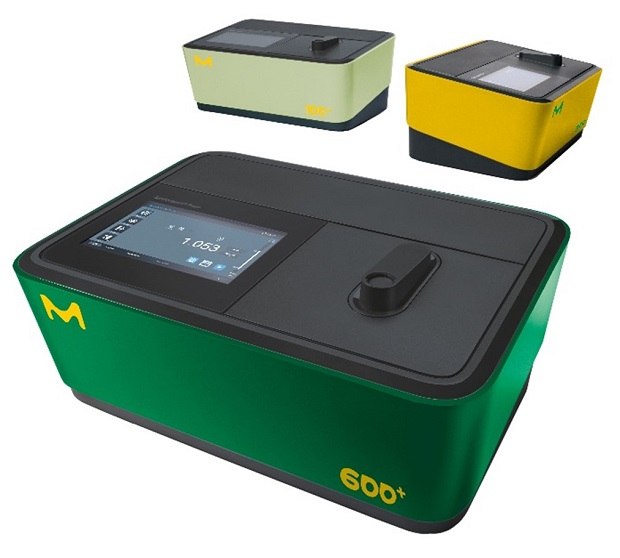K270 Olive Oil: UV-Spectrophotometric Determination of Specific Absorbance at 270 nm According to Commission Regulation (EEC) No 2568/91 Annex IX

Spectroquant® spectrophotometers- Prove 100, Prove 300, & prove 600
INTRODUCTION
The K270 test is a valuable technique for evaluating the rectification or secondary oxidation of oils. Naturally extracted oils lack fatty acid chains formed by double or triple conjugated bonds, which are commonly present in rectified oils. These bonds contribute to higher UV absorbance values, particularly in the 270 nm region, compared to pure and freshly extracted olive oils. With its ability to detect these structural changes, the K270 test plays a crucial role in monitoring and maintaining the quality of olive oil.
In this application, the determination of K270 values in olive oils is described using UV-spectrophotometric analysis, following the guidelines outlined in Commission Regulation (EEC) No 2568/91 Annex IX.1
MATERIALS AND REAGENTS For K270 Testing
- Cyclohexane for spectroscopy Uvasol® (1.02822)
- Rectangular cells quartz 10 mm (1.00784)
- Spectroquant® UV/VIS Spectrophotometer Prove 300 plus (1.73027)* or
- Spectroquant® UV/VIS Spectrophotometer Prove 600 plus (1.73028)*
- Volumetric flasks, class A, volume range 25 mL to 100 mL
- Analytical balance 0.001 g
- Paper filters
*Also legacy systems Spectroquant® Spectrophotometer Prove 300 and 600
METHOD AND MEASURING RANGE
- Method No. 2527
- 0 – 4.00 K270
SAMPLE PREPARATION
- Homogenize liquid samples at 30 °C.
- Heat solid samples to a temperature of max. 10 °C above the melting point, melt and homogenize. If contaminations are present, filter the sample over a fast-filtering paper.
- Weigh the sample into a volumetric flask, accurately weighed to 1 mg.
- The quantity of the sample and volume of the volumetric flask must be selected in such a way that the measurement solution exhibits an absorbance between 0.1 and 0.8 A at 270 nm. The following table can be used for orientation:
- Add a few milliliters of cyclohexane and dissolve the sample at room temperature. Subsequently, make up the contents of the volumetric flask to the mark with cyclohexane and mix. Filter turbid solutions over a paper filter.
ZERO ADJUSTMENT
For each measurement series, a zero adjustment is required. It is recommended to use the same cell for zero adjustment and for sample measurement. The zeroing procedure for the measurement series is automatically prompted by the instrument.
- For zero adjustment fill a 10-mm rectangular quartz cell with cyclohexane.
- After prompting, place the rectangular cell filled with cyclohexane in the cell compartment, the zero adjustment is executed automatically.
- Confirm the implementation of zero adjustment with "OK".
- The zero adjustment is valid for the entire measurement series.
MEASUREMENT PROCEDURE For K270 Analysis
- Select method 2527 "K270 (olive oil)" from the method list.
- Enter the weight in grams and confirm with "OK".
- To enter the volume of the sample solution, tap the input field in the “Sample Solution” line, enter the volume in milliliters, and confirm with "OK".
- Press "START" to reach the measuring mode.
- Before measuring the first sample, the system automatically prompts a zero adjustment (procedure see "Zero adjustment").
- Transfer the sample solution into a 10-mm rectangular quartz cell and place the rectangular cell into the cell compartment, the measurement is performed automatically.
- Confirm measurement with "OK".
- The K270 value is shown in the display.
- Press "START" to start the measurement procedure for the next sample. The system does not prompt a repeat of the zero adjustment.
Note: According to Commission Regulation (EEC) No 2568/91 Annex IX the method checks automatically if the measured absorption is in a range of 0.100 – 0.800 A. If the absorption is not in this range, a pop-up message appears: “Condition not met – Absorbance < 0.1” resp. “Condition not met – Absorbance > 0.8”. In these cases, the sample preparation needs to be adjusted. Use an appropriate sample weight in a range of 0.100 – 1.000 g and a volumetric flask in a range of 10 – 100 mL to achieve these absorption values.
CONCLUSION
This method is also suited for other oils and fats and in addition to Commission Regulation No 2568/91 Annex IX is based on the:
- DGF Standard Methods C-IV 6 (13)
- ISO 3656:2011
- COI/T.20/Doc. No. 19/Rev. 3 (2015)
- CODEX STAN 33-1981 (2013)
- AOCS Ch 5-91(2009)
Low K values are characteristic of high-quality, extra native olive oils; refined or aged olive oils exhibit higher K values at the 232, 268, and 270 nm wavelengths. The limits for olive oils can be referenced from Commission Regulation No. 2568/91 Annex IX.
REFERENCES
To continue reading please sign in or create an account.
Don't Have An Account?